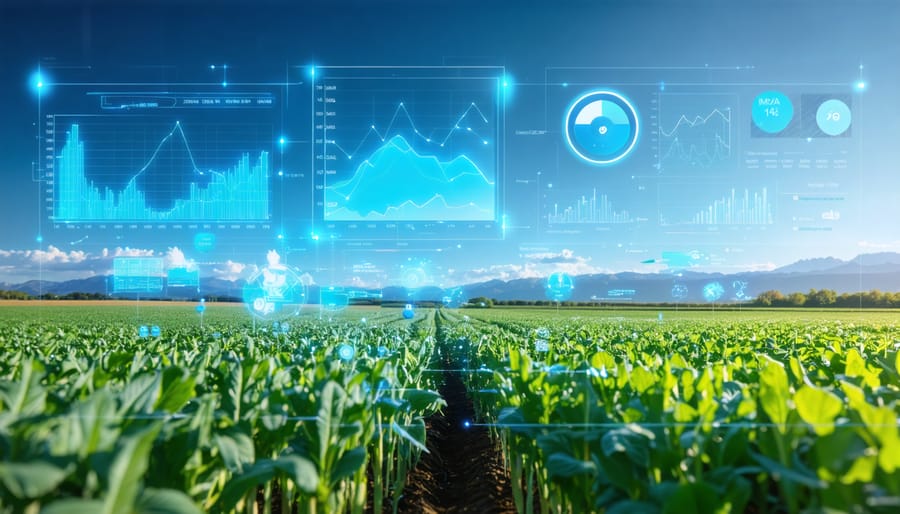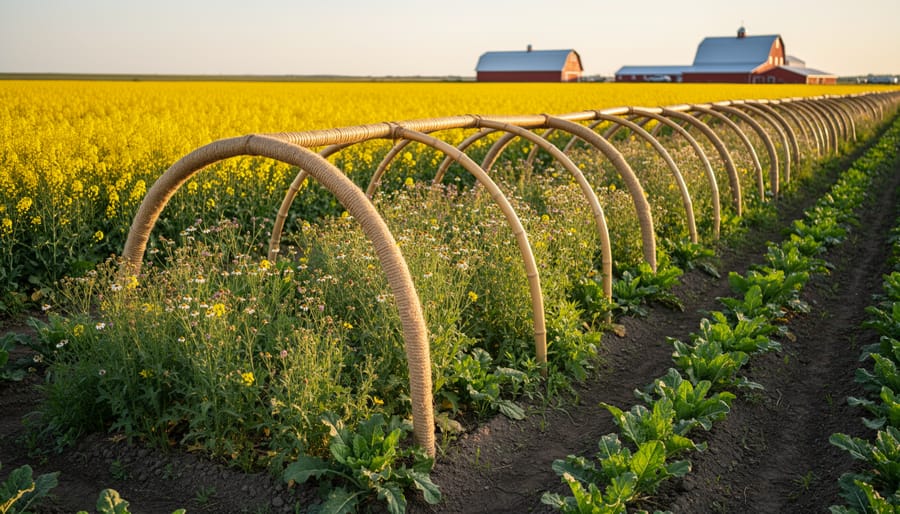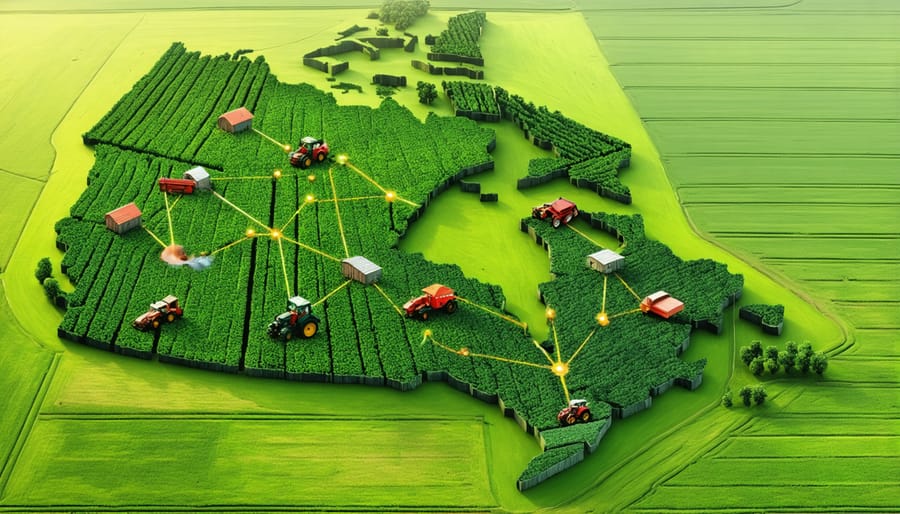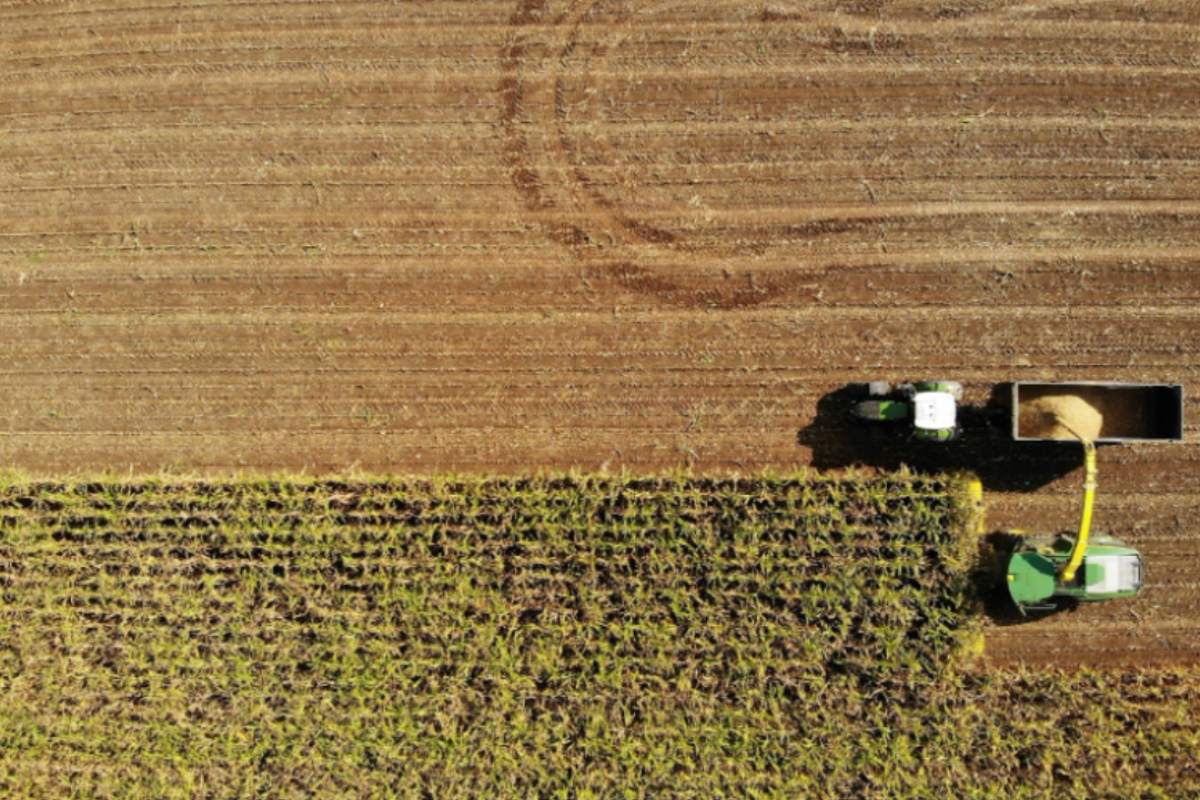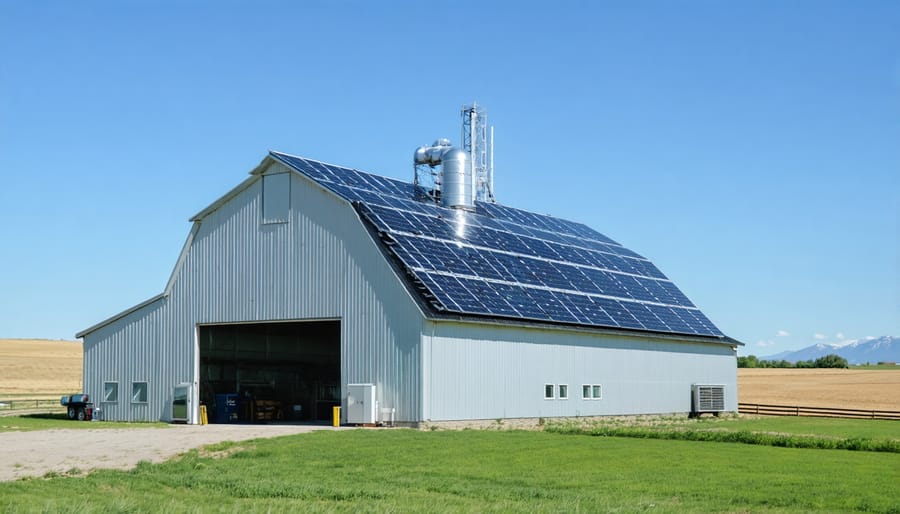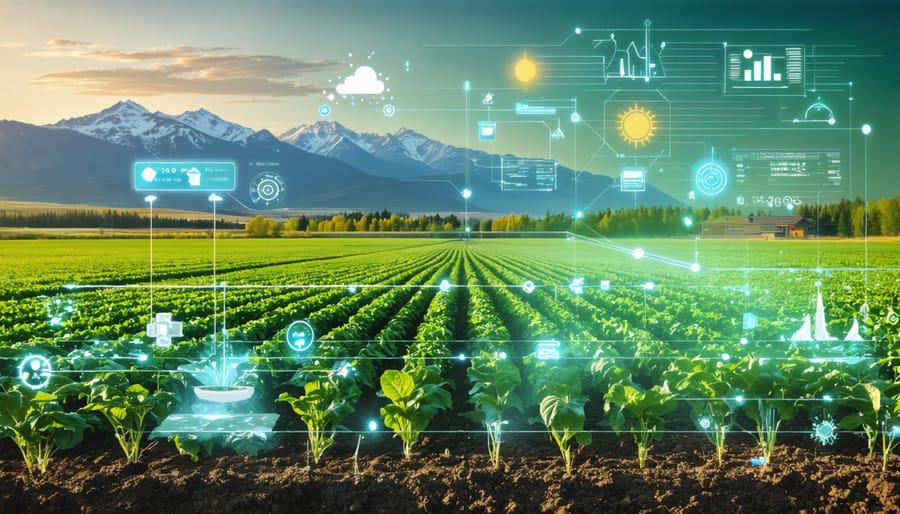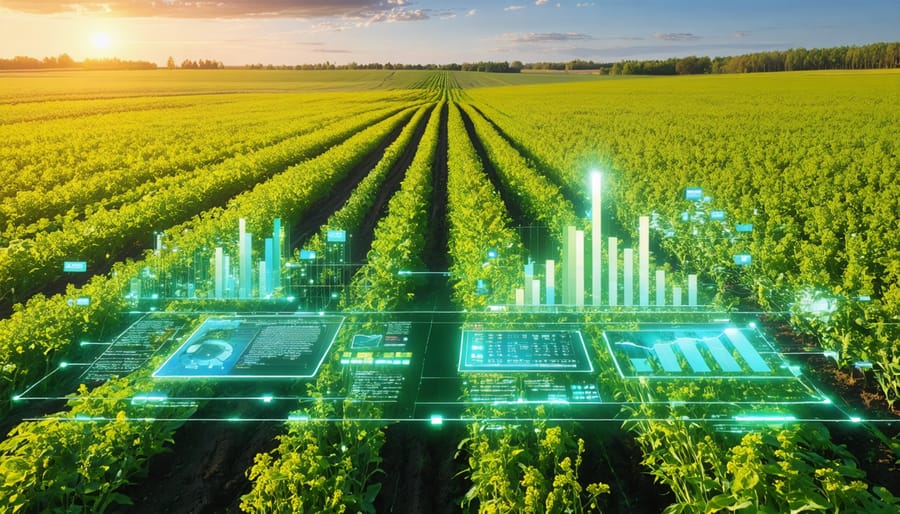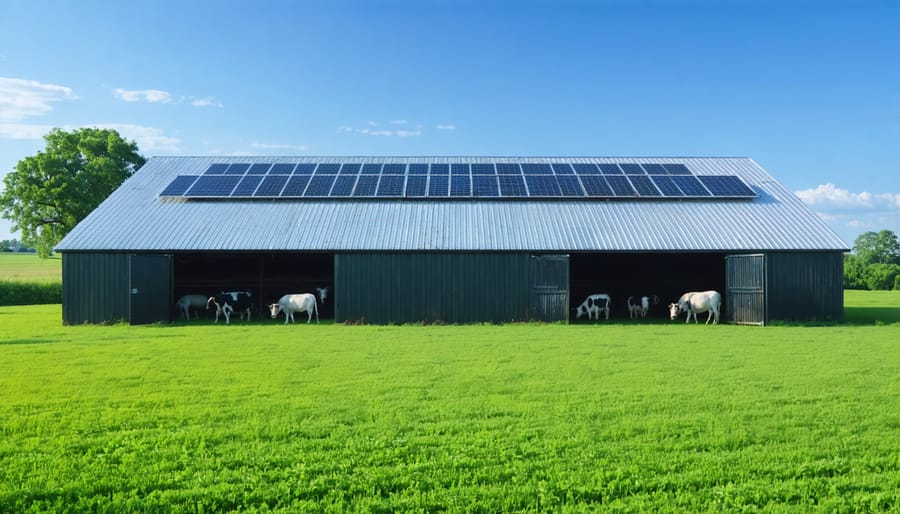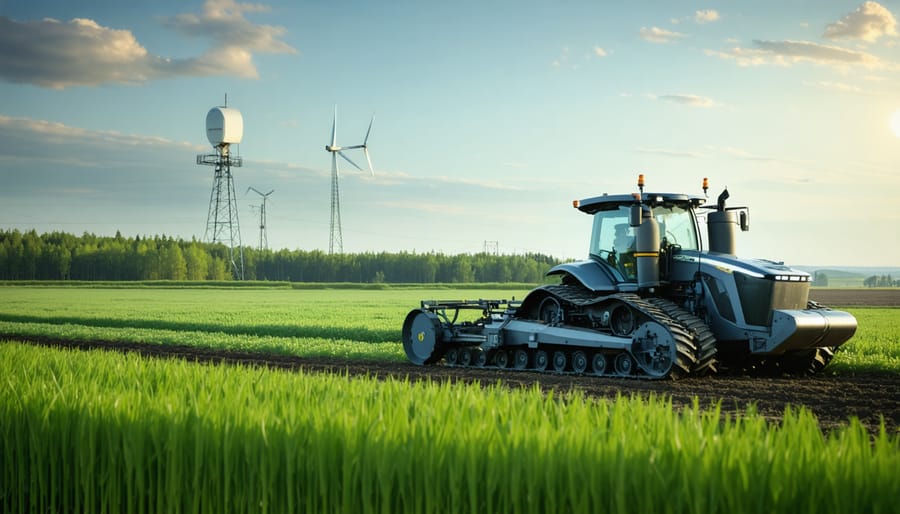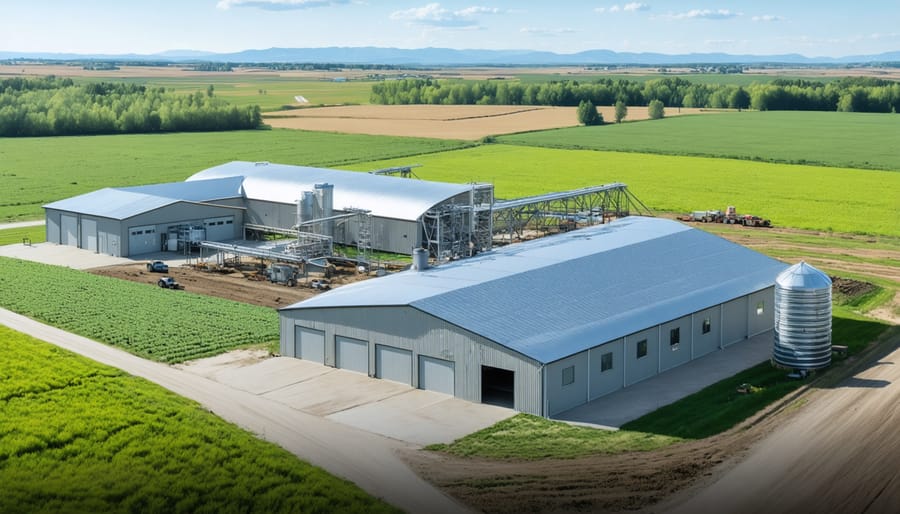Transform your farm’s efficiency with smart water systems that precisely monitor soil moisture levels across every hectare. Modern soil moisture sensors now deliver real-time data directly to your smartphone, reducing water waste by up to 30% while maximizing crop yields in Alberta’s diverse growing conditions. These intelligent systems integrate seamlessly with existing irrigation infrastructure, providing crucial insights about soil conditions at different depths and automatically adjusting water delivery based on actual plant needs. For Alberta farmers facing increasing weather variability and rising operational costs, smart soil moisture sensors represent a proven technology that’s already helping hundreds of local producers save thousands of dollars annually in water and energy costs while maintaining optimal growing conditions throughout the season. By combining precision agriculture with practical implementation, these sensors are revolutionizing how we approach water management in Canadian agriculture, ensuring every drop counts toward sustainable and profitable farming operations.
Why Smart Soil Moisture Sensors Matter for Alberta Farmers
The Cost of Poor Moisture Management
Poor moisture management can take a hefty toll on Canadian farms, both environmentally and financially. Here in Alberta, farmers lose an estimated $80-100 per hectare annually due to inefficient irrigation practices. Over-watering not only wastes our precious water resources but can also lead to soil erosion, nutrient leaching, and increased susceptibility to plant diseases.
Under-watering presents equally challenging issues, with crop yields potentially dropping by 20-30% during critical growth stages. For a mid-sized farm of 400 hectares, this could mean losses exceeding $100,000 in a single growing season. Additionally, stress-induced quality reduction can result in lower market prices for harvested crops.
Local studies from the University of Alberta show that farms using traditional irrigation timing methods typically use 30% more water than necessary. This excess not only impacts operational costs through increased pumping and labour expenses but also contributes to rising utility bills and equipment wear.
Beyond immediate financial impacts, poor moisture management can lead to long-term soil health degradation, affecting farm sustainability and property value. However, with proper moisture monitoring and management, most of these costs are preventable.
Environmental Benefits for Canadian Farms
Smart soil moisture sensors are revolutionizing water conservation efforts across Canadian farms, delivering impressive environmental benefits while maintaining crop yields. By implementing these sensors alongside other climate-ready farming practices, Alberta farmers have reported water savings of up to 30% compared to traditional irrigation methods.
These sophisticated sensors help prevent both over-watering and under-watering, reducing water waste and runoff that can carry valuable nutrients away from the soil. This precision approach not only conserves our precious water resources but also minimizes the energy consumption associated with pumping and irrigation systems.
Many Prairie region farmers have noticed improved soil health after implementing smart sensors, as consistent moisture levels help maintain beneficial microorganism populations. The technology also supports reduced soil erosion and compaction, contributing to long-term land sustainability.
Local success stories show that farms using these sensors have decreased their environmental footprint while building more resilient agricultural operations. For instance, several Lethbridge-area farms have cut their water usage by 25% in the first season alone, demonstrating that environmental stewardship and profitable farming can go hand in hand.
How Smart Soil Sensors Work
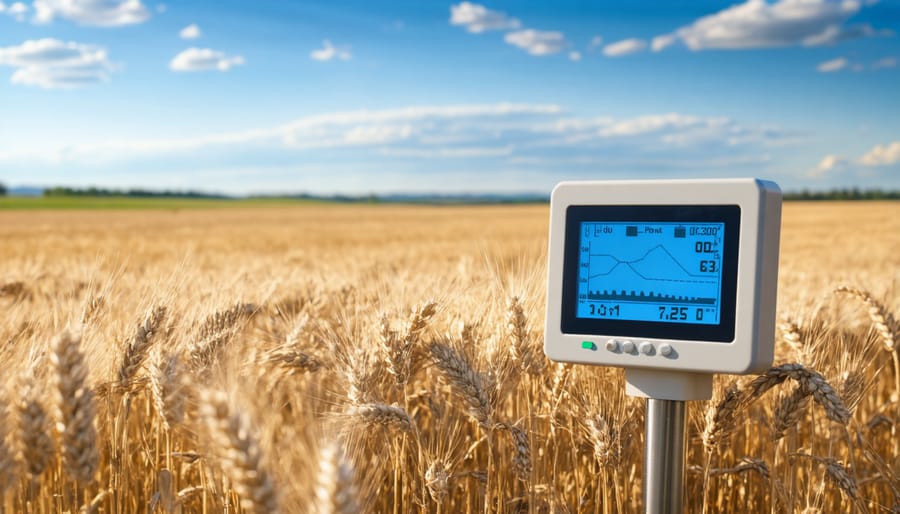
Sensor Types and Technology
Modern smart soil moisture sensors come in several varieties, each suited to different farming needs and conditions. The most common type is the capacitive sensor, which measures soil moisture by detecting electrical charges in the soil. These sensors are particularly reliable for Alberta’s diverse soil types, from the black soil zones to brown chernozemic regions.
Time Domain Reflectometry (TDR) sensors offer higher accuracy and are ideal for precision farming operations. While more expensive, they provide detailed data crucial for optimal soil health management and irrigation decisions.
Resistive sensors, though more affordable, work well for smaller operations and market gardens. They measure soil moisture by gauging electrical resistance between two points in the soil. These sensors typically require more frequent calibration but remain a practical choice for many Alberta farmers.
The newest generation of smart sensors incorporates multiple sensing capabilities. Besides moisture levels, they can measure temperature, salinity, and nutrient content. Many come equipped with wireless connectivity, allowing real-time data transmission to your smartphone or computer.
For our climate, look for sensors rated for both freezing temperatures and summer heat. The best options offer weather-resistant casings and long battery life, crucial for our extended growing season. Most modern sensors can be integrated with existing irrigation systems, making them a practical upgrade for farms of any size.
Data Collection and Analysis
Modern smart soil moisture sensors collect data through a network of strategically placed probes that communicate with a central monitoring system. These sensors typically take readings every 15-30 minutes, providing farmers with real-time soil moisture levels at different depths, usually from 10 to 100 centimetres below the surface.
The collected data is transmitted wirelessly to a dashboard or mobile app, where it’s presented in easy-to-understand graphs and charts. Many systems include customizable alerts that notify farmers when moisture levels fall below or exceed predetermined thresholds. This feature is particularly valuable during Alberta’s unpredictable weather patterns, helping farmers respond quickly to changing conditions.
The analysis component involves interpreting this data alongside other environmental factors. For example, a moisture reading of 25% might be ideal for canola but too wet for wheat. Modern systems often integrate weather forecasts, soil type information, and crop-specific requirements to provide comprehensive recommendations.
Many Alberta farmers are now using artificial intelligence-powered analytics to predict irrigation needs up to seven days in advance. These predictive models consider historical data, current readings, and weather forecasts to optimize water usage. The system can also identify patterns in soil moisture fluctuation, helping farmers make informed decisions about irrigation scheduling and water conservation strategies.
For best results, farmers should regularly calibrate their sensors and verify readings against physical soil samples at least once per growing season.
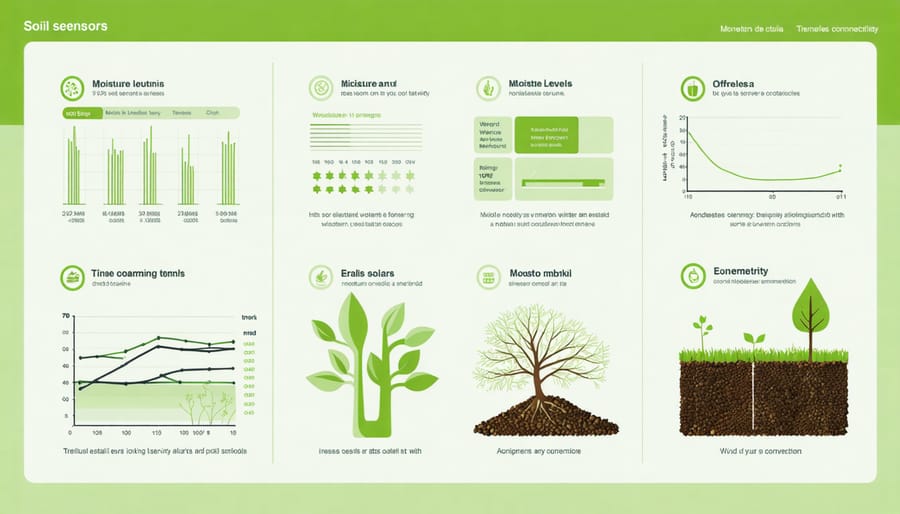
Real Results from Alberta Farms
Success Story: Davidson Family Farm
Located just outside of Lethbridge, the Davidson Family Farm has transformed their 800-hectare operation through the strategic implementation of smart soil moisture sensors. Sarah Davidson, a third-generation farmer, made the decision to invest in this technology in 2021 after experiencing several challenging growing seasons with unpredictable rainfall patterns.
“We were either overwatering or underwatering our canola fields,” Sarah explains. “The smart sensors have completely changed how we approach irrigation management.”
The Davidsons installed a network of 12 wireless sensors across their main crop fields, focusing particularly on areas with varying soil compositions. Within the first growing season, they reduced their water usage by 27% while maintaining optimal soil moisture levels for their crops.
The system sends real-time data to Sarah’s smartphone, allowing her to make informed decisions about irrigation scheduling. “Before, we relied heavily on visual inspection and weather forecasts. Now, we have precise data showing us exactly what’s happening beneath the soil surface,” she notes.
The investment paid for itself within 18 months through water savings and improved yield. The farm’s canola yield increased by 15% in the first year, while their water consumption decreased significantly. The Davidsons also noticed reduced soil erosion and better nutrient retention in their fields.
“What’s really valuable is the historical data we’re collecting,” Sarah adds. “We can now track moisture patterns throughout the seasons and make better-informed decisions for future plantings.” The Davidson family regularly hosts field days to share their experience with neighbouring farmers, contributing to the growing adoption of smart farming technologies in Southern Alberta.
Expert Interview: Agricultural Tech Specialist
To gain deeper insights into smart soil moisture sensors, we spoke with Dr. Sarah Thompson, an agricultural technology specialist at the University of Alberta’s Faculty of Agricultural, Life & Environmental Sciences.
“What excites me most about smart soil moisture sensors is their ability to transform how Alberta farmers make irrigation decisions,” says Dr. Thompson. “In our climate, where moisture conditions can vary significantly across a single field, these sensors provide crucial real-time data that wasn’t available to previous generations of farmers.”
Dr. Thompson emphasizes that the technology has evolved significantly over the past five years. “We’re seeing sensors that can now transmit data wirelessly to smartphones, with battery life lasting entire growing seasons. The accuracy has improved dramatically, and the cost has come down considerably.”
When asked about implementation challenges, she notes that proper sensor placement is crucial. “I recommend farmers start with a pilot program in one field, placing sensors at different depths and locations to understand moisture variation. The data patterns you’ll observe in the first season are invaluable for expanding the system.”
Dr. Thompson also highlights the economic benefits: “Our research shows that farms using smart moisture sensors typically reduce their irrigation water usage by 25-30%. For a quarter section under irrigation, that can mean significant savings in both water and energy costs.”
Her advice for farmers considering this technology? “Start small, but start soon. The learning curve isn’t as steep as many think, and the return on investment, especially in our prairie climate, can be substantial.”
Implementation Guide for Your Farm
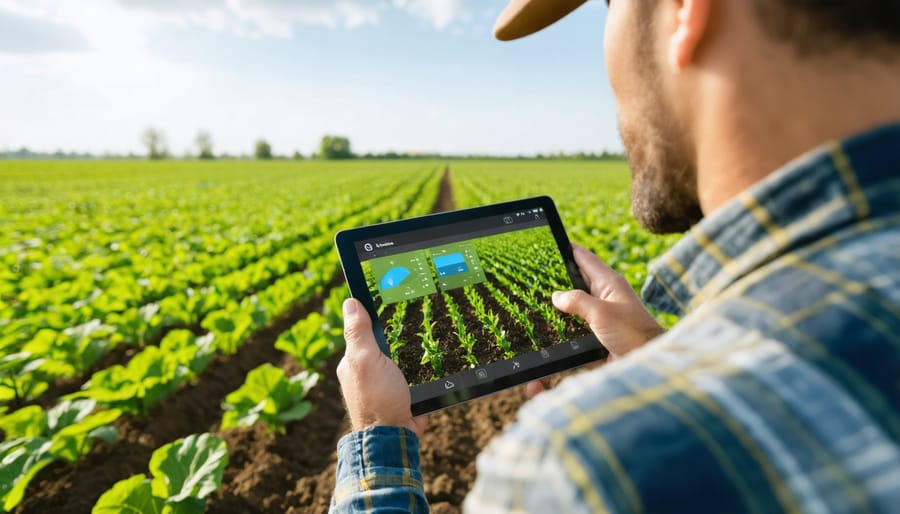
Choosing the Right System
When selecting a smart soil moisture sensor for your farm, several key factors need careful consideration to ensure you’re investing in the right water management solutions for your specific needs. First, consider your soil type – Alberta’s diverse soil conditions, from clay-rich Black Chernozems to Sandy Loams, require different sensor calibrations for accurate readings.
Your field size and topography matter significantly. Larger operations might benefit from multiple sensors working together in a network, while smaller plots may only need standalone units. Consider the sensor’s transmission range and whether it integrates with your existing farm management system.
Power source reliability is crucial for our prairie climate. Solar-powered sensors with backup batteries often prove most practical, especially in remote locations. Look for units rated for our extreme temperature ranges, from -40°C winters to +30°C summers.
Data accessibility should match your operational style. Some farmers prefer real-time smartphone updates, while others value detailed weekly reports. Consider whether you need historical data tracking for seasonal planning.
Budget considerations should include not just initial costs, but also maintenance, replacement parts, and potential subscription fees for data services. Many Alberta farmers find that investing in higher-quality sensors pays off through reduced water usage and improved crop yields over time.
Remember to check for Canadian certification and local support availability. Having accessible technical support within your region can make a significant difference in troubleshooting and maintenance.
Installation and Maintenance Tips
For optimal performance of your smart soil moisture sensor, proper installation is crucial. Start by selecting a location that represents the average soil conditions of your field – avoid unusually wet or dry spots. In Alberta’s varied terrain, install sensors at multiple depths: 15 cm, 30 cm, and 60 cm to monitor moisture throughout the root zone.
Before installation, calibrate your sensor according to manufacturer specifications, considering your specific soil type. Clay-heavy soils common in central Alberta require different calibration settings than sandy soils found in southern regions.
When installing, create a pilot hole using an auger to prevent sensor damage. Ensure good soil-to-sensor contact by carefully backfilling with native soil. Avoid air pockets, which can affect readings. Mark sensor locations with visible flags to prevent accidental damage during field operations.
For maintenance, check sensor readings weekly during growing season. Clean sensors annually, typically after harvest, and inspect cables for damage from wildlife or equipment. Replace protective cases if cracked to prevent moisture damage. During winter, consider removing sensors in areas prone to deep frost.
Keep detailed records of calibration dates and maintenance activities. Most sensors need recalibration every two years, but challenging conditions might require more frequent attention. For wireless systems, check battery levels monthly and replace before the critical growing season begins.
As we’ve explored throughout this article, smart soil moisture sensors represent a significant step forward for Alberta’s agricultural community. These innovative tools not only help preserve our precious water resources but also contribute to better crop yields and more efficient farm management practices.
The evidence from local farms shows that implementing smart soil moisture sensors can lead to water savings of up to 30% while maintaining or improving crop quality. For many Alberta farmers, this technology has already proven its worth through reduced irrigation costs and more precise crop management.
Remember, starting small is perfectly acceptable. Consider beginning with a pilot project on a portion of your land to gain confidence with the technology. Local agricultural extension services and experienced farmers in your community are excellent resources for guidance and support during implementation.
The investment in smart soil moisture sensors is an investment in the future of sustainable farming. As our climate continues to change and water management becomes increasingly crucial, having precise, real-time soil moisture data will become even more valuable.
We encourage you to take the next step in your farming journey. Whether you’re managing a large operation or a smaller family farm, smart soil moisture sensors can help you farm smarter, not harder. Connect with your local agricultural advisor or farming association to learn more about available support and funding opportunities for implementing this technology on your farm.

